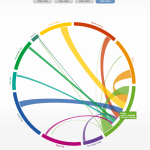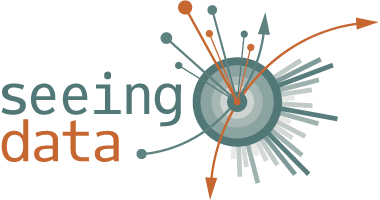How do visualization professionals think about users?

view original
As part of our endeavor to understand how people make sense of visualisations, we are interested in how the producers of visualisations perceive their end users. Assumptions about what makes an effective visualization and about how end users interact with visualisations inform how visualisations get made, which in turn informs how people interact with them. So uncovering visualizer perceptions of users is an important first step in achieving our aims.
In order to do this, we carried out interviews with 13 of the most important visualization professionals and agencies operating in the world today. We did this in July and August 2014. We asked questions about work undertaken, clients, relationships with clients, technologies used, research processes, notions of effective visualization, and user testing. This blog post offers a brief and preliminary reflection on the themes that emerged; systematic analysis of interview material has not yet been undertaken.
Interviewees are from around the globe (2 x American, 4 x Italian, 4 x Dutch, 1 x German, 2 x British – not all are resident in their countries of origin). Ten are male, three are female. Given ages range from 25 to 42, with most interviewees in their 30s. Five direct or co-direct visualization agencies or research labs; 5 are employed as visualisers, either by agencies or newspapers, and 3 are freelance, independent visualisers. Their backgrounds include: interaction, information, visual or graphic design; computer science; media technology; geography and cartography; art and architecture; media and journalism. Their thoughts are summarized in bullet points below.
On users
- There are generally two client types: a) clients as end users, where visualisation systems are developed for client companies’ internal usage; b) clients as intermediaries for end users, such as media organisations, charities, public sector bodies – visualisations produced for these the latter clients, especially media orgs, gets more ‘seen’ than the former.
- For some visualisation professionals and companies, research means user research, but this is not always undertaken with users. Rather, it could be via client’s pre-existing user knowledge, log file analysis, or other methods.
- Some interviewees come from user experience or usability design backgrounds, but few are able to do a lot of user testing/engagement. In these cases, learnt principles of usability are applied. One interviewee who has done some user testing was surprised by low levels of ‘graphicacy’, or graphical literacy.
- ‘User feedback’ in the design process is often expert feedback, drawn from peers working in the same office, for example.
- Some interviewees feel that ‘engagement’ can easily be measured, for example with eye-tracking techniques, but others believe that a range of factors influence engagement, and say that a ‘do these 5 things & your viz will be effective’ list will be impossible to achieve. One interviewee said that it’s hard to catch something so intuitive as a response to a viz, so it shouldn’t be our goal to have such a checklist; rather, a map of posssibilities.
- The range of intermediaries that work in between a visualiser and a user (such as editor at a newspaper, people in legal roles at NGOs or public sector organisations,) play a role in determining what kind of visualisation gets produced and how it gets distributed.
- Web and social media analytics are important sources of user feedback (through, for example, clicks, shares, mentions, comments).
What makes a visualization ‘effective’ (in the view of interviewees)?
- Some interviewees said that simplicity makes a visualisation effective. Minimal decoration, said some. Simplicity is possible if you have explanatory text, but harder without.
- Others noted that complexity can be retained, and that visualisations can help to communicate complexity. One noted that not giving everything away straightaway (so that users have to explore, and there is something to find) works.
- A legend/key is important; it acts as guidance. ‘Access points’ (a title, legend, paragraph, labels) are important. Likewise, designers need to make it clear what’s interactive.
- Ordinary people making visualisations, whatever quality, is important in order to develop ‘visualisation literacy’ in users – three interviewees highlighted this.
- Compelling content matters.
- Motivation and curiosity on the part of the user matter; the dataset has to be relevant to the user. People have to be willing to figure something out, and to be able to think about what is not shown.
- Beauty is compelling, or at least strangenesss is; graphical elegance can help users to navigate.
- Experience/prior exposure to visualisations on the part of the user.
- Appropriateness of visualisation approach.
